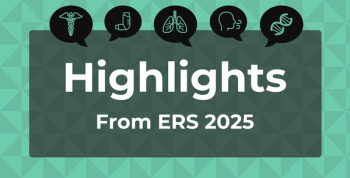
CDC Reports Largest Pediatric Influenza-Associated Encephalopathy Case Series in 2024-2025 Season
Key Takeaways
- The 2024-2025 influenza season saw a historic rise in pediatric influenza-associated encephalopathy (IAE) cases, with 109 reported, including 37 acute necrotizing encephalopathy (ANE) cases.
- The CDC requested reports of pediatric IAE due to the lack of formal surveillance, aiming to better understand the condition's nationwide impact.
US pediatric influenza-associated encephalopathy (IAE) cases surged during the 2024-2025 season, highlighting severe health risks and the need for better surveillance.
The
The 2024-2025 season was historically severe, recording the highest cumulative influenza-associated
IAE refers to neurologic syndromes triggered by influenza virus infection of the respiratory tract, leading to a dysregulated host inflammatory response and varying degrees of brain dysfunction. ANE represents one of the most severe forms of IAE, characterized by rapid neurologic decline and neuroimaging evidence of necrosis or hemorrhage involving the thalami. ANE disproportionately affects children and has a poor prognosis, with a high risk of lasting neurologic sequelae or death.
In January 2025, the CDC was
The neuroimaging findings and discharge diagnoses for each reported case underwent review by a physician to categorize them as IAE or influenza-associated neurologic disease. IAE cases were further subcategorized as ANE or other IAE.
The CDC received 192 reports that met surveillance criteria. Of these, 109 were classified as IAE, with 37 (34%) subcategorized as ANE and 72 (66%) as other IAE. An additional 82 reports did not meet the IAE criteria and were categorized as other influenza-associated neurologic disease.
Among the 109 IAE cases, the median patient age was 5 years (IQR, 3-10). About half of the patients were female (46%), were non-Hispanic White (52%), and were previously healthy with no underlying medical conditions (55%). At initial assessment, the most common signs and symptoms were altered mental status (88%), respiratory symptoms (87%), and fever (85%).
Additionally, neurologic symptoms commenced a median of 2 days (IQR, 1-3) after illness onset. Neuroimaging was performed in 94% of patients with IAE, with abnormal findings reported in 97% of ANE cases and 49% of other IAE cases.
Influenza antiviral treatment was administered to 84% of patients with IAE, beginning a median of 3 days after illness onset. Among 90% of all patients with IAE, antiviral treatment started on or after the date of hospital admission. Of the 93 patients with available vaccination information, 15 (16%) had received at least 1 dose of the 2024-2025 seasonal influenza vaccine 14 or more days before illness onset.
Regarding hospital care, 74% of all patients with IAE were admitted to an intensive care unit (ICU), 54% received invasive mechanical ventilation, and 19% died. Of the 70 survivors with available discharge data, 47% had not returned to their neurologic baseline.
All 37 patients with ANE were admitted to an ICU, 89% received invasive mechanical ventilation, and 15 (41%) died. Of the 13 survivors with available discharge data, only 1 returned to neurologic baseline at discharge.
The researchers acknowledged several of the report's limitations, including that the cases represented a convenience sample that may not reflect all US IAE cases during the 2024-2025 influenza season. Additionally, the absence of standardized diagnostic criteria for IAE may have led to underdiagnosis, potentially underestimating its true incidence. In response, the CDC is strengthening its surveillance efforts to better understand the nationwide impact of IAE.
“Additional measures are needed to develop and implement surveillance to improve understanding of the incidence, potential risk factors, severity, and public health impact of IAE in the United States,” the authors concluded. “CDC is integrating surveillance for IAE and ANE into existing CDC-sponsored surveillance systems for the 2025-26 influenza season to better understand these serious and potentially preventable complications of influenza.”
References
- Fazal A, Harker EJ, Neelam V, et al. Pediatric influenza-associated encephalopathy and acute necrotizing encephalopathy — United States, 2024–25 influenza season. MMWR Morb Mortal Wkly Rep. 2025;74(36):556-564. doi:10.15585/mmwr.mm7436a1
- McCormick B. US flu hospitalizations reach highest levels in over a decade. AJMC®. September 15, 2025. Accessed October 8, 2025.
https://www.ajmc.com/view/us-flu-hospitalizations-reach-highest-levels-in-over-a-decade - Fazal A, Reinhart K, Huang S, et al. Reports of encephalopathy among children with influenza-associated mortality — United States, 2010-11 through 2024-25 influenza seasons. MMWR Morb Mortal Wkly Rep. 2025;74(6):91-95. doi:10.15585/mmwr.mm7406a3
Newsletter
Stay ahead of policy, cost, and value—subscribe to AJMC for expert insights at the intersection of clinical care and health economics.













































